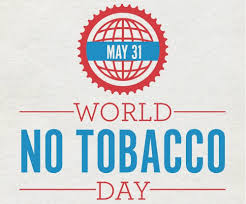
Quitting Tobacco
Quitting tobacco is not easy. Very few tobacco users can successfully quit the habit in their first attempt. But the evidence is strong that it can be done. From quit lines to counselling to prescription medicines, there are numerous effective ways to quit.
Health benefits of quitting
- 12 hours after quitting the carbon monoxide level in blood drops to normal
- 84% is the increased chance of quitting successfully after being intensively advised by a physician
Ways to Quit Smoking
There are many different ways to quit smoking. Some work better than others. The best plan is to choose the one that you can stick with. Consider which of these might work for you:
- Cold turkey (no outside help). About 90% of people who try to quit smoking do it without outside support — no aids, therapy, or medicine. Although most people try to quit this way, it’s not the most effective or successful method. Only between 4% and 7% are able to quit by doing it alone.
- Behavioral therapy. This involves working with a counselor to find ways not to smoke. Together, you’ll find your triggers (such as emotions or situations that make you want to smoke) and make a plan to get through the cravings.
- Nicotine replacement therapy. Nicotine gum, patches, inhalers, sprays, and lozenges are nicotine replacement therapies. They work by giving you nicotine without the use of tobacco. You may be more likely to quit with nicotine replacement therapy, but it works best when combined with behavioral therapy and lots of support from friends and family. And remember that the goal is to end your addiction to nicotine, not simply to quit using tobacco.
- Medication. Bupropion (Zyban) and varenicline (Chantix) are prescription medications that can help with your cravings and symptoms from withdrawals.
Combo treatments. Using a combination of treatment methods might increase your chances of quitting. For example, using both a nicotine patch and gum may be better than a patch alone. Other combination treatments that are helpful include behavioral therapy and nicotine replacement therapy; prescription medication used together a nicotine replacement therapy patch; and a nicotine replacement therapy patch and nicotine spray.The FDA hasn’t approved using 2 types of nicotine replacement therapies at the same time, so be sure to talk with your doctor first to see if this is the right approach for you.
No matter which method you choose, an important part of quitting is to build the quit plan that works for you. Pick a quit date that gives you time to prepare without losing your motivation. Tell friends and family that you are quitting. Get rid of all cigarettes and ashtrays from your home, work, and car. Figure out your smoking triggers, and decide how you’re going to deal with them.
Contact us today to make an appointment with your primary care physician. We can work with you to find a smoking cessation method that works for you.
